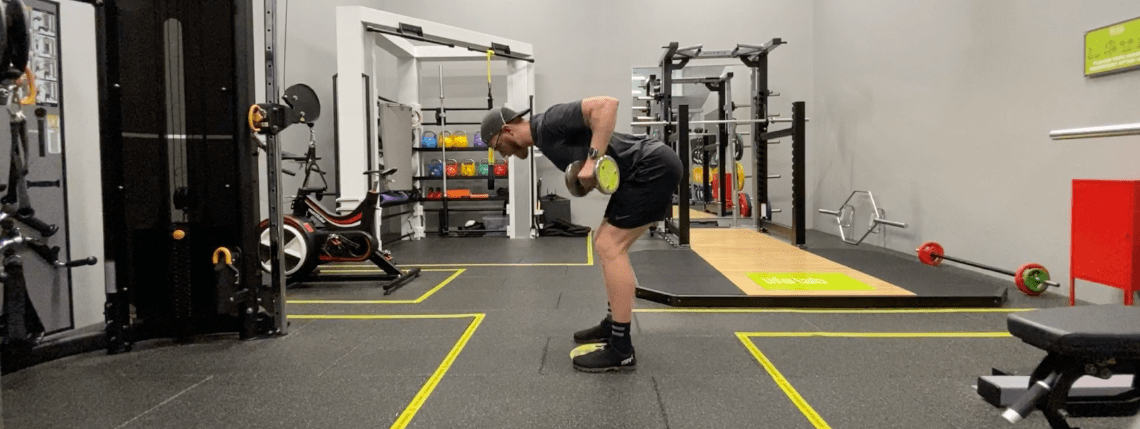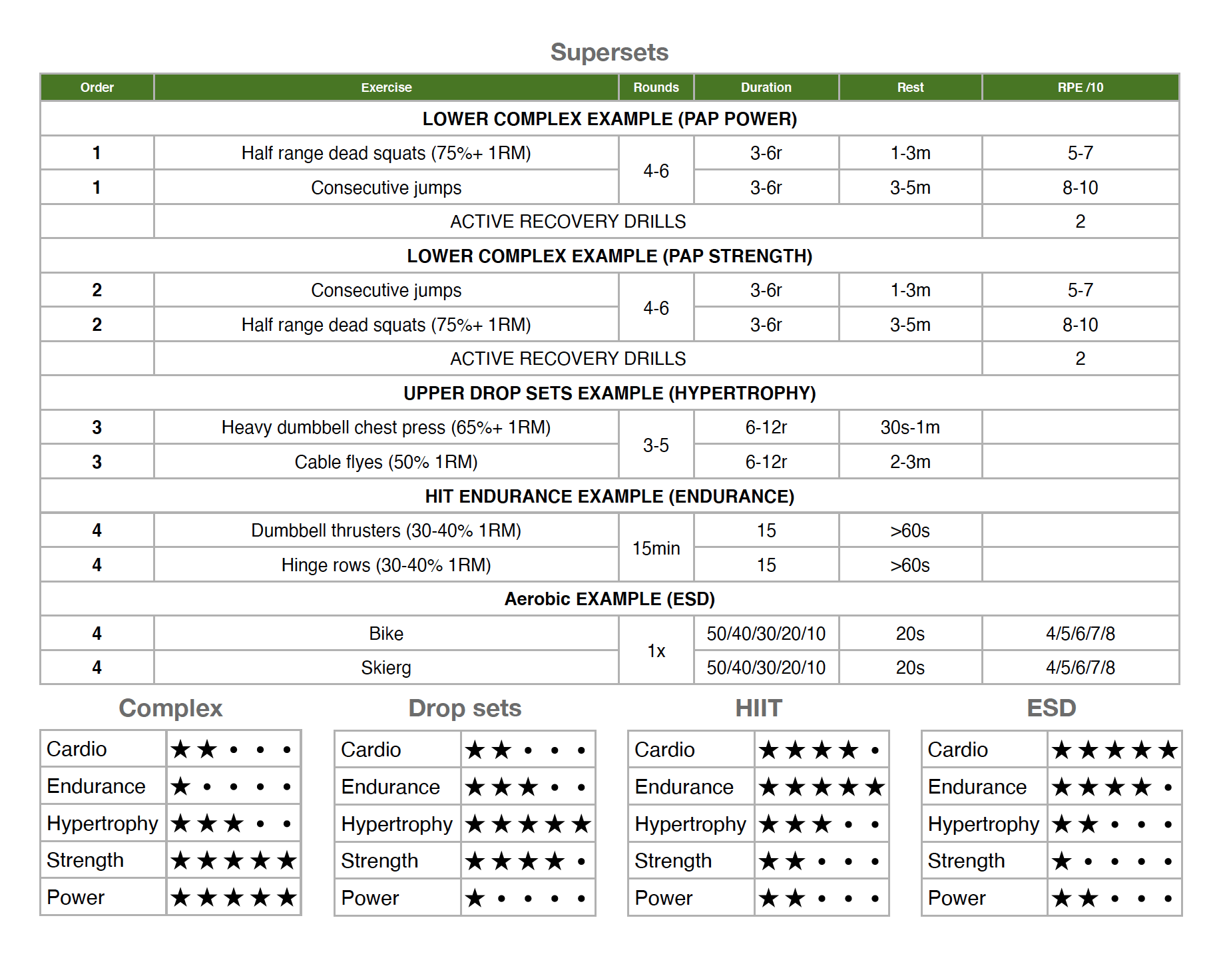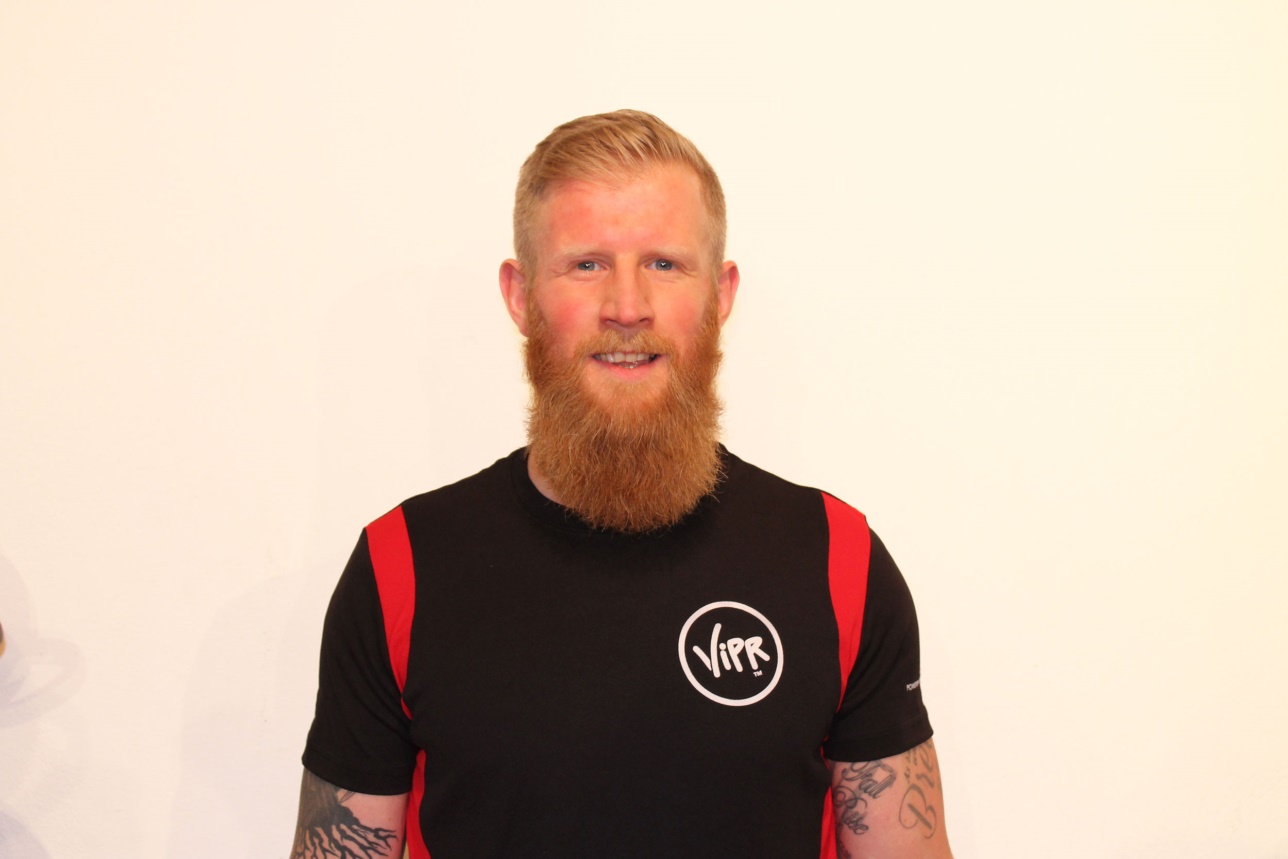In our latest vlog, we dive into the superset. We discuss what a superset is and how to define it. Then we explore how we can build upon the current definition of supersets, in order to meet the goals and needs of our entire client spectrum.
By the time we’ve finished, you’ll be able to apply supersets to any training setting, whether it be one-to-one or group, athlete or desk warrior, and use supersets to supersize your programme and support goal-orientated progress.
Here are two common definitions of supersets:
“Pairing of two exercises back-to-back with no rest.”
“The two main types of supersets are opposing muscle group supersets and same muscle group supersets.”
It’s as simple as that and, if we take the main and simplistic premise of ‘two exercises’ and run with that, we can begin to play with and manipulate the variables and open up our programming toolbox.
Let’s look at a selection of supersets formulas, highlight their current goal orientation and from there begin to think outside of convention and broaden our boundaries. (See table.)
Download this table HERE
1.Complex supersets – Power or strength
Using the theory of post-activation potentiation (PAP), complex supersets can be programmed to enhance the outcome of power or strength depending on the exercise selection and exercise order.
PAP uses a ‘primer’ exercise before unleashing a ‘target’ exercise. The primer helps to excite and stimulate, and puts muscle, fascia and the central nervous system (CNS) in a greater ready state in order to gain a bigger performance from the target exercise.
The primer should be performed at a sub-maximal effort with regards to duration or reps, but should be explosive or heavy enough to prime Type II muscle fibres and challenge the CNS.
2.Drop supersets – Hypertrophy
In comparison to complex supersets, drop sets are all about exhausting and using the largest cross section of muscle fibres possible. By beginning with a heavy compound load (60-80%1RM), followed by a lighter isolated load (40-60%) with a minimal rest period in between exercises, fibres are still under fatigue and therefore more/different fibres have to be recruited to finish the job.
3.HIT supersets – Endurance – Classic
Performing two exercises with dramatically sub-maximal loads and preferably opposing muscle groups/movement patterns, back-to-back with minimal rest, challenges muscular endurance and provides a large amount of metabolic conditioning.
4.ESD supersets – Energy systems development
Using two traditionally aerobic exercises, we have the ability to play around with the work: rest ratios to find the desired outcome.
We have the ability to focus on:
- aerobic endurance (59-74% Max HR)
- aerobic power (75-84% Max HR)
- anaerobic threshold (85-88% Max HR)
- anaerobic endurance (89-95% Max HR)
- anaerobic power (95-100% Max HR).
Sessions may be programmed in order to focus on one particular asset or blend the assets, depending on the activity that we are trying to improve at or the desired energy system that we wish to expose.
Recovery/rest period ideas
By making the most of recovery/rest time, our clients will value this time and not see it as a waste and also are more likely to adhere to the rests that are needed for them to achieve the desired session outcome. Well-prepped rest periods can serve as a great way to gain client trust and work on all of the little extras that will enhance the session experience.
- Reaction drills/games: Maintaining or heightening exercise or mental focus
- Pre-prepared topics for discussion: Educating clients/building rapport and trust in professionalism/discussing barriers/discussing goals
- Mobility drills: Working on drills that are associated with, or not associated with, the exercise selection. Generally, if you are working with high force or heavy loads where joint stiffness is preferable, then be careful in your decision on what to ‘loosen’.
Where to next? why not learn how to break down the bent-over row
Author bio
Aaron Barnett is homegrown at FitPro. He has been a member of the FitPro family from the start in his role as national coach for ViPR Group Fitness and the MOSSA ViPR workout. Since then, Aaron has kept at the forefront of development by becoming national trainer manager for the FitPro trainer team and also ViPR education manager.
Aaron feels most alive when presenting and sharing his passion for performance coaching. As part of his commitment to remaining at the forefront of functional training, he is proud to have recently completed the Gray Institute GIFT programme, becoming a Fellow of Applied Functional Science.









